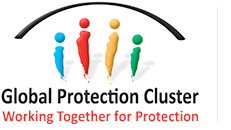Gender
Gender equality in humanitarian action is about effectively reaching all segments of the affected population. Women, girls, boys and men play different roles within the family and community, and have different levels of access to power and resources. Humanitarian actors must therefore design programmes to meet the needs of male and female regardless of age and ensure that all have safe and equal access to humanitarian assistance. To achieve this they must be consulted and actively participate in needs assessments and decision-making processes.
The term gender refers to the social differences between females and males throughout the life cycle that are learned, and though deeply rooted in every culture, are changeable over time and have wide variations both within and between cultures. “Gender” determines the roles, power and resources for females and males in any culture. Historically, attention to gender relations has been driven by the need to address women’s needs and circumstances as women are typically more disadvantaged than men. Increasingly, however, the humanitarian community is recognizing the need to know more about what men and boys face in crisis situations.
Gender equality or equality between women and men refers to the equal enjoyment by females and males of all ages and regardless of sexual orientation of rights, socially valued goods, opportunities, resources and rewards. Equality does not mean that women and men are the same but that their enjoyment of rights, opportunities and life chances are not governed or limited by whether they were born female or male. Protecting human rights and promoting gender equality must be seen as central to the humanitarian community’s responsibility to protect and provide assistance to those affected by emergencies.
The Inter-Agency Standing Committee (IASC) Sub-Working Group on Gender and Humanitarian Action works to support the mainstreaming of gender equality programming in humanitarian action. For more information please click here.
Evaluations of humanitarian effectiveness show gender equality results are weak, although there is a universal acceptance that humanitarian assistance must meet the distinct needs of women, girls, boys and men to generate positive and sustainable outcomes.
The IASC Gender Marker is a tool that codes, on a 0″2 scale, whether or not a humanitarian project is designed well enough to ensure that women/girls and men/boys will benefit equally from it or that it will advance gender equality in another way. If the project has the potential to contribute to gender equality, the marker predicts whether the results are likely to be limited or significant. Read more.
